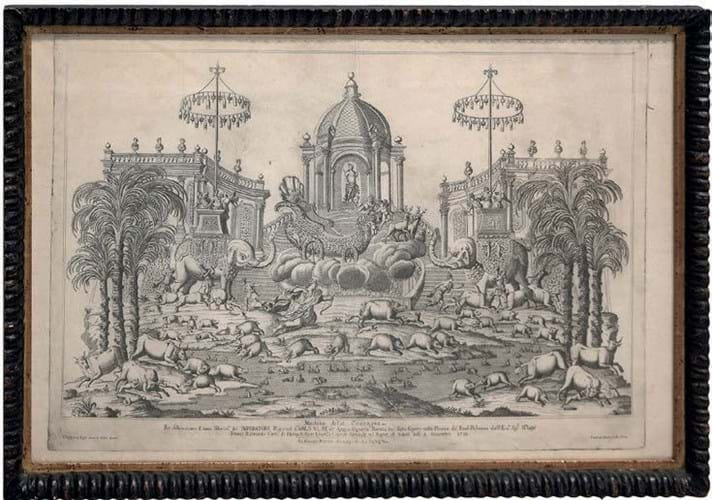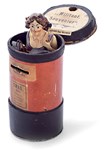Based on utopian dreams, the Cuccagna events of the era in Naples were often the site of bitter realities.
Cuccagna (or Coccagna, or Cockaigne in English) was a mythical land of plenty where hardships were few, sex was liberated and food was in rich supply. The fictional world was in marked contrast to the difficult lives of peasants.
In Naples and other Italian cities, Cuccagna festivals centred on huge structures built of food such as bread, cake, cheese, and hams (macchine della cuccagna) erected in the royal square. Fountains could flow with wine.
At the end of the festival, on the king’s signal, the masses would rush to seize the food off the structures. Poor or even nearing starvation, many peasants would be injured or killed in the resulting chaos.
Prints were probably made for the nobles who came to watch proceedings.
The examples here are from a set of 10 large engraved plates by Francesco de Grado after Domenico Antonio Vaccaro and published by Francesco Ricciardo. They depict festivals that took place during the reign of Holy Roman Emperor Charles VI and were printed in Naples between 1729-34.
Thought to be the only surviving example of this set, they are on display at dealer Sims Reed Gallery in London and offered for £65,000. Each shows a different Cuccagna, most decorated with prosciutto, bread or in some cases live animals ready for the slaughter.











